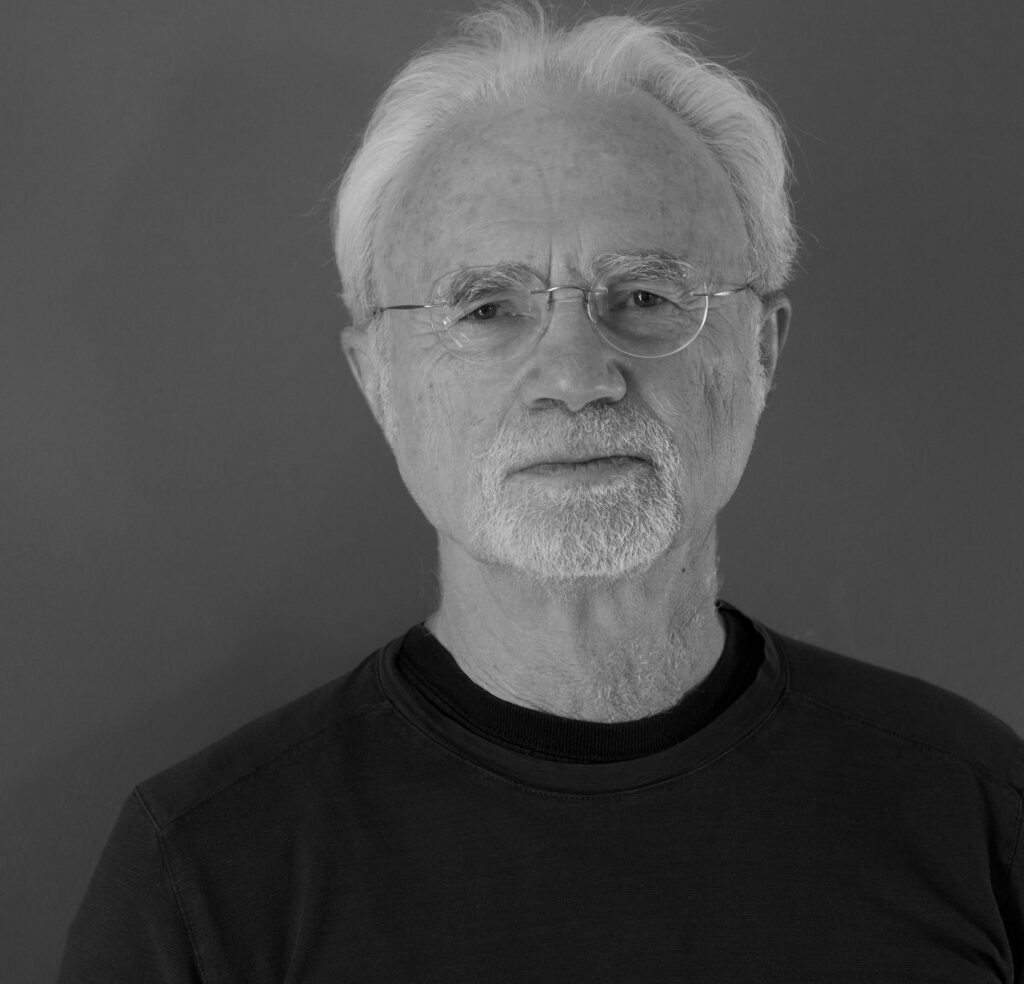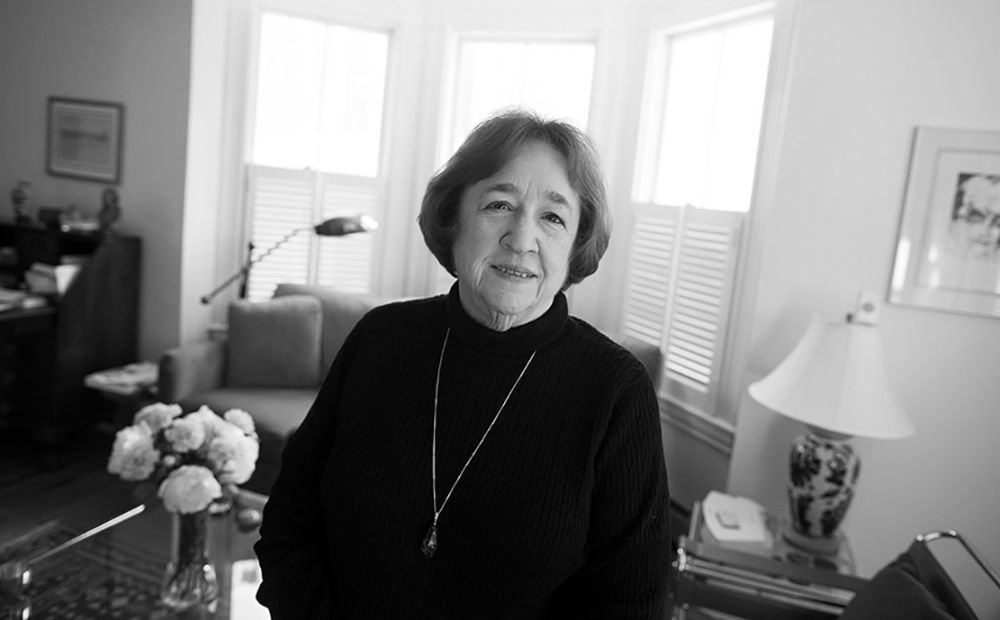Issue 176, Spring 2006
The last time this magazine spoke with Joan Didion, in August of 1977, she was living in California and had just published her third novel, A Book of Common Prayer. Didion was forty-two years old and well-known not only for her fiction but also for her work in magazines—reviews, reportage, and essays—some of which had been collected in Slouching Towards Bethlehem (1968). In addition, Didion and her husband, John Gregory Dunne (who was himself the subject of a Paris Review interview in 1996), had written a number of screenplays together, including The Panic in Needle Park (1971); an adaptation of her second novel, Play It As It Lays (1972); and A Star Is Born (1976). When Didion’s first interview appeared in these pages in 1978, she was intent on exploring her gift for fiction and nonfiction. Since then, her breadth and craft as a writer have only grown deeper with each project.
Joan Didion was born in Sacramento, and both her parents, too, were native Californians. She studied English at Berkeley, and in 1956, after graduating, she won an essay contest sponsored by Vogue and moved to New York City to join the magazine’s editorial staff. While at Vogue, she wrote fashion copy, as well as book and movie reviews. She also became a frequent contributor to The National Review, among other publications. In 1963, Didion published her first novel, Run River. The next year she married Dunne, and soon afterwards, they moved to Los Angeles. There, in 1965, they adopted their only child, Quintana Roo.
In 1973, Didion began writing for The New York Review of Books, where she has remained a regular contributor. While she has continued to write novels in recent decades—Democracy(1984) and The Last Thing He Wanted (1996)—she has increasingly explored different forms of nonfiction: critical essay, political reportage, memoir. In 1979, she published a second collection of her magazine work, The White Album, which was followed by Salvador (1983), Miami (1987), After Henry (1992), Political Fictions (2001), and Where I Was From (2003). In the spring of 2005, Didion was awarded a Gold Medal from the American Academy of Arts and Letters.
In December of 2003, shortly before their fortieth anniversary, Didion’s husband died. Last fall, she published The Year of Magical Thinking, a book-length meditation on grief and memory. It became a best-seller, and won the National Book Award for nonfiction; Didion is now adapting the book for the stage as a monologue. Two months before the book’s publication, Didion’s thirty-nine-year-old daughter died after a long illness.
Our conversation took place over the course of two afternoons in the Manhattan apartment Didion shared with her husband. On the walls of the spacious flat, one could see many photographs of Didion, Dunne, and their daughter. Daylight flooded the book-filled parlor. “When we got the place, we assumed the sun went all through the apartment. It doesn’t,” Didion said, laughing. Her laughter was the additional punctuation to her precise speech.
INTERVIEWER
By now you’ve written at least as much nonfiction as you have fiction. How would you describe the difference between writing the one or the other?
JOAN DIDION
Writing fiction is for me a fraught business, an occasion of daily dread for at least the first half of the novel, and sometimes all the way through. The work process is totally different from writing nonfiction. You have to sit down every day and make it up. You have no notes—or sometimes you do, I made extensive notes for A Book of Common Prayer—but the notes give you only the background, not the novel itself. In nonfiction the notes give you the piece. Writing nonfiction is more like sculpture, a matter of shaping the research into the finished thing. Novels are like paintings, specifically watercolors. Every stroke you put down you have to go with. Of course you can rewrite, but the original strokes are still there in the texture of the thing.
INTERVIEWER
Do you do a lot of rewriting?
DIDION
When I’m working on a book, I constantly retype my own sentences. Every day I go back to page one and just retype what I have. It gets me into a rhythm. Once I get over maybe a hundred pages, I won’t go back to page one, but I might go back to page fifty-five, or twenty, even. But then every once in a while I feel the need to go to page one again and start rewriting. At the end of the day, I mark up the pages I’ve done—pages or page—all the way back to page one. I mark them up so that I can retype them in the morning. It gets me past that blank terror.
INTERVIEWER
Did you do that sort of retyping for The Year of Magical Thinking?
DIDION
I did. It was especially important with this book because so much of it depended on echo. I wrote it in three months, but I marked it up every night.
INTERVIEWER
The book moves quickly. Did you think about how your readers would read it?
DIDION
Of course, you always think about how it will be read. I always aim for a reading in one sitting.
INTERVIEWER
At what point did you know that the notes you were writing in response to John’s death would be a book for publication?
DIDION
John died December 30, 2003. Except for a few lines written a day or so after he died, I didn’t begin making the notes that became the book until the following October. After a few days of making notes, I realized that I was thinking about how to structure a book, which was the point at which I realized that I was writing one. This realization in no way changed what I was writing.
INTERVIEWER
Was it difficult to finish the book? Or were you happy to have your life back—to live with a lower level of self-scrutiny?
DIDION
Yes. It was difficult to finish the book. I didn’t want to let John go. I don’t really have my life back yet, since Quintana died only on August 26.
INTERVIEWER
Since you write about yourself, interviewers tend to ask about your personal life; I want to ask you about writing and books. In the past you’ve written pieces on V. S. Naipaul, Graham Greene, Norman Mailer, and Ernest Hemingway—titanic, controversial iconoclasts whom you tend to defend. Were these the writers you grew up with and wanted to emulate?
DIDION
Hemingway was really early. I probably started reading him when I was just eleven or twelve. There was just something magnetic to me in the arrangement of those sentences. Because they were so simple—or rather they appeared to be so simple, but they weren’t.
Something I was looking up the other day, that’s been in the back of my mind, is a study done several years ago about young women’s writing skills and the incidence of Alzheimer’s. As it happens, the subjects were all nuns, because all of these women had been trained in a certain convent. They found that those who wrote simple sentences as young women later had a higher incidence of Alzheimer’s, while those who wrote complicated sentences with several clauses had a lower incidence of Alzheimer’s. The assumption—which I thought was probably erroneous—was that those who tended to write simple sentences as young women did not have strong memory skills.




